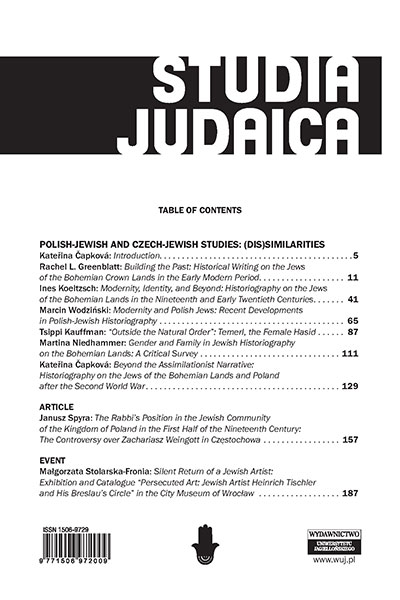Localized Working-Class Political Violence in Russia’s Pale of Settlement, 1906–1907
Localized Working-Class Political Violence in Russia’s Pale of Settlement, 1906–1907
Author(s): Inna ShtakserSubject(s): Politics, Jewish studies, Political history, Social history, Studies in violence and power, Pre-WW I & WW I (1900 -1919), Identity of Collectives
Published by: Wydawnictwo Uniwersytetu Jagiellońskiego
Keywords: Revolution of 1905; political violence; mass violence; Pale of Settlement; working class;
Summary/Abstract: This article addresses meanings of localized political violence among working-class youth in the Pale of Settlement and the Kingdom of Poland during the late period of the 1905 Revolution. The author claims, using contemporary debates and personal documents, that localized political violence became at that time an important expression of working-class militant identity, though its meanings varied with location and ethnicity. Localized violence became a statement of the militants’ newly acquired dignity as revolutionaries within their local communities as well as a statement of their higher revolutionary commitment vis-à-vis the established revolutionary parties and the better-educated revolutionaries. While the article addresses violence of militants of all stripes, it particularly focuses on the meaning of localized violence among anarchists, since their uncompromising rejection of all social hierarchies combined with anti-intellectualism pushed them into perceiving violent confrontations with the authorities as the ultimate expression of their political and personal identities, more so than for other militants. The anarchists perceived themselves at war against the authorities and saw their war as an apocalyptic struggle of the good against the evil. The emphasis of the article is on working-class Jewish militants from the Pale of Settlement and from the Kingdom of Poland, who constituted a substantial minority within anarchist groups and who had to struggle against a combination of class and ethnicity-based discrimination which, as the author claims, affected their identity as militants and the meaning of localized violence for them.
Journal: Studia Judaica
- Issue Year: 20/2017
- Issue No: 39
- Page Range: 77-104
- Page Count: 28
- Language: English

